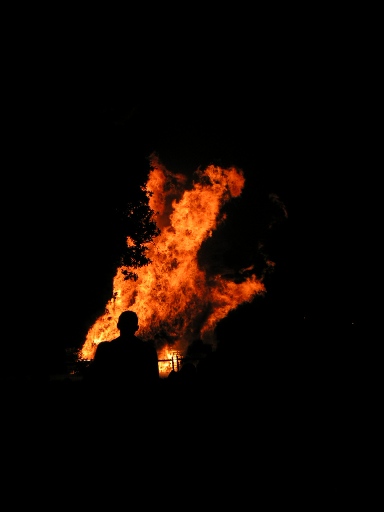Exposure - Over and under exposing
Exposing for a photo is as important as framing it right, composing it and being creative among other things. We all use decent intelligent devices in the form of digital cameras. smartphones and exposure meters for the more professionals. Those devices often tell us what the right exposure is. But what if the photo taken at such exposure
What does exposure really mean?
According to the well trusted source of Wikipedia
In other words, exposure affects how bright your photos ends up, but with the appropriate details required (not a photoshop brightness adjustment). I will write a blog post explaining aperture, exposure, ISO and the environmental light you were working with soon.
Had the exposure been as per what the device suggested, the fire would have been much brighter with more movement in the shape, hardly any silhouette and the background would have surfaced a bit more from the darkness. This photo was taken at the Slough bonfire night in 2005 with a Minolta dImage Z1.
(Long exposure - but not over exposed. I would argue it was still "under exposed")
When doing wedding photos, some photographers tend to over expose their photos to give a more lively or potentially happy feeling to the outcome.
What does exposure really mean?
According to the well trusted source of Wikipedia
In photography, exposure is the amount of light per unit area (the image plane illuminance times the exposure time) reaching a photographic film or electronic image sensor, as determined by shutter speed, lens aperture and scene luminance. Exposure is measured in lux seconds, and can be computed from exposure value (EV) and scene luminance in a specified region.In photographic jargon, an exposure generally refers to a single shutter cycle. For example: a long exposure refers to a single, protracted shutter cycle to capture enough low-intensity light, whereas a multiple exposure involves a series of relatively brief shutter cycles; effectively layering a series of photographs in one image. For the same film speed, the accumulated photometric exposure (Hv) should be similar in both cases.
In other words, exposure affects how bright your photos ends up, but with the appropriate details required (not a photoshop brightness adjustment). I will write a blog post explaining aperture, exposure, ISO and the environmental light you were working with soon.
Under exposing
Sometimes, under exposing a photo can result in a desired result. The following image had a great environment around with quite a bright fire in the middle. The silhouette of the man in the middle will hardly be visible with a longer exposure. Fire by nature moves and great rays of light that change shape, direction and intensity.Had the exposure been as per what the device suggested, the fire would have been much brighter with more movement in the shape, hardly any silhouette and the background would have surfaced a bit more from the darkness. This photo was taken at the Slough bonfire night in 2005 with a Minolta dImage Z1.
Over exposing
A longer exposure, coupled with a high f-number can sometimes give amazing results. One evening, with the London eye closed for the evening and the warm weather out, I decided to try a longer exposure. There is a difference between over-exposing and long exposure. Over exposing results in brighter images whilst longer exposure only means a slower shutter speed that you'd be using generally.(Long exposure - but not over exposed. I would argue it was still "under exposed")
When doing wedding photos, some photographers tend to over expose their photos to give a more lively or potentially happy feeling to the outcome.
Over exposing in this photo allows for a brighter result giving a more jovial feel.






Comments
Post a Comment